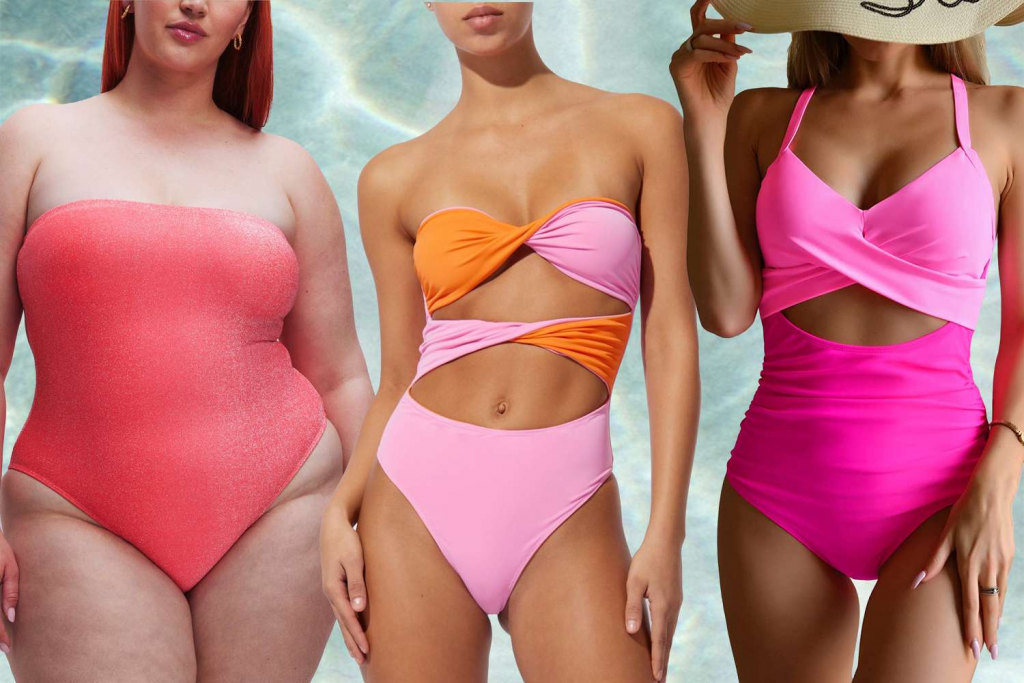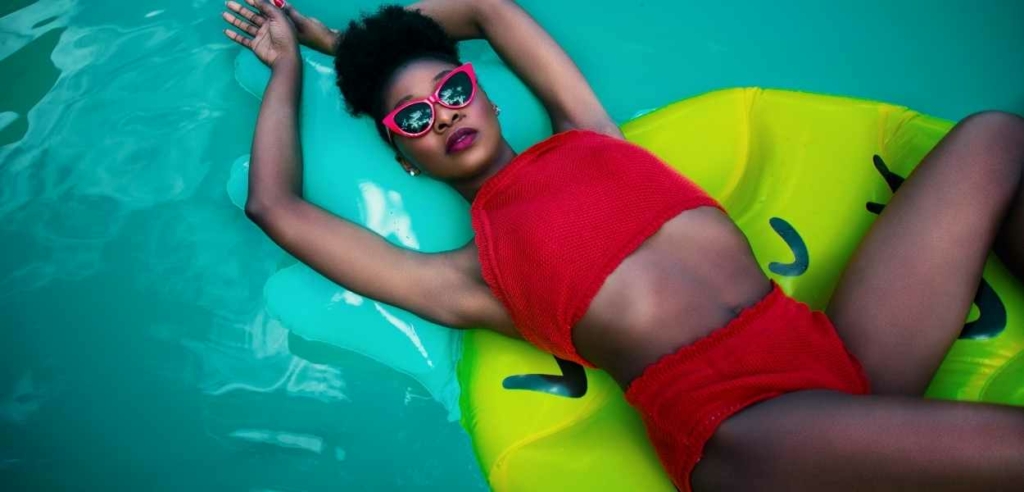Swimsuits have been pioneers in the fashion industry in different aspects. From its inventions to the changes they brought concerning sustainability, beachwear brands are showing how colorful, fun, innovative, technological and eco-friendly the summer can be.
Sustainability is no longer just an option: it is indisputable. The prioritization of ecological efficiency and innovations becomes the source of the future growth of swimsuit brands. The awareness brought new environmental solutions to the production chain that are focusing on the use of high-quality reused materials and circular economy to help to deal with waste, ocean pollution and other sustainable issues.
But, to understand how swimsuit brands are being an example in the eco-conscious situation, we need to go back in time and see why bikinis and swimming shorts have been doing a revolution in the industry for a long time.
The Swimsuit History
The year 1946 marked a new era. The Second World War was over for a few months. UNESCO and UNICEF came into existence. The first Cannes Film Festival took place. Cher and Dolly Parton were born. And, also in that same year, Louis Réard, the French engineer who left the motors to work with fashion, exhibited in a swimming pool in Paris his newest creation: the modern bikini.
It wasn’t the first actual swimsuit or the only two-piece clothing. But it changed the entire industry when it comes to clothing to go to the beach and chill at the pool.
Swimsuits: The Being of Everything
As the mosaics found in Villa Romana Del Casale show, in ancient Greece and Rome, women wore head scarf tops and bottoms to participate in sports. Furthermore, the Victorians, with their increasing interest in spas, favored restraint in their incursions in outdoor bathing: the first photos of beachwear showed women in long dresses and shorts to face the ocean waves.

However, the first half of the 20th century saw a rapid reduction in the amount of fabric needed to go to the beach. A journey surrounded by controversy, which included the arrest of Australian swimmer Annette Kellerman in Boston in 1907, when she wore a tighter single-piece bathing suit, even though it covered her from neck to toes. Several years later in 1913, stylist Carl Jantzen introduced a two-piece made up of shorts and a tight top, but in the beginning, the industry and society didn’t accept it very well.
With the arrival of the 1920s, society started to consider that showing off more skin than usual was less daring. The 1930s saw the back and sides gaining not only space but serious exposure.
From the beautiful cut-out swimsuits by Claire McCardell to the appearance of stars like Jayne Mansfield, Rita Hayworth and Ava Gardner – not to mention countless pinups and showgirls – in more revealing unique pieces and, increasingly, two pieces, the nature of what was an acceptable suit kept changing continuously. But, at the time there was The Hays Code: a set of rules in effect in Hollywood from 1934, prohibited the display of the belly button in films. That meant that the bottom of the two-piece had to reach to the waist.
Swimsuits: When Everything Changed
It was only after World War II that the belly button would be displayed. In the summer of 1946, two designers innovated in the creation of swimwear. With a very similar intention, Jacques Heim and Louis Réard appeared. The new pieces were provocative for the social imaginary of the time and therefore took a while to be adopted effectively.

The costume was initially banned on many beaches. But little by little, it was incorporated into films, art, and, later, into the daily lives of many people around the world.
In 1962, a bikini stopped the movie industry and from that moment on, the modern swimsuit became more accepted. Ursula Andress starred in Dr. No, one of James Bond’s movies. Andress’s white bikini was a huge success and made a mark on history. The lower part of the two-piece features a wide white British Army belt with brass buckles and fittings, and a scabbard on the left side to hold a large knife.
Each society has a different type of swimsuit. In Brazil, bikinis are usually a little smaller. In Europe, men have shorter shorts than those in California. There are different formats, colors, styles and types of beachwear to suit different personalities.
Swimsuit Brands and Sustainability: The Perfect Match
In an era of constant change, you may have noticed the growth in the search for sustainable fashion items. Whether opting for fabrics that pollute the environment less, choosing brands that create a friendly work environment, or even deciding to buy second-hand clothes. But, far beyond paying attention just to everyday outfits, beachwear has become a branch that needs to get on your radar and, especially with the arrival of summer and the positive perspective of the pandemic situation in the USA.
A recent survey released by Mckinsey reveals that, during the pandemic, 57% of respondents made significant changes to their lifestyle to make it more sustainable. For the interviewees, the three main expectations regarding fashion brands are that they should: “reduce the negative impact on the environment”, be “careful about the health of employees” and “contribute to helping factory workers in Asia to be paid better “.
An empirical association of the relationship between different fashion sectors and nature places beachwear as one of the most connected sectors with planet’s health. Swimsuits are designed for moments in the water, the source of life and one of our most precious natural assets, which suffers from pollution and degradation. For this reason, many brands are concerned with preserving marine biodiversity and producing their collections and products towards sustainable values.
Get Inspired! Sustainable Swimsuits Brands You Need Know
Meet some role model brands that offer beautiful sustainable swimsuits.
1. Vilebrequin
Vilebrequin is a French brand and was found in 1971. To get the girl of his dreams, Fred Prysquel created the company 50 years ago. He was a pioneer in twist fabrics and upcycling.
The brand’s symbol is a turtle and that’s not a coincidence. In every collection, they have pieces with turtles all over them. Vilebrequin’s focuses on preserving marine biodiversity and their pieces have good quality to last for generations. They also make sustainable swimsuits with 50% recycled fabric and are aiming to go to 80% in the next few years.
As stated by Roland Herlory, CEO of Vilebrequin and Hermès alumni:. “Quality is the most important element for me, in a time when eco-responsibility is the topic on everyone’s mind, quality is one answer. Not forgetting about fantasy and timeless elegance of course”. The brand makes swimsuits with quality materials to last for generations.
To celebrate the brand’s 50th anniversary, they are creating a foundation to preserve the ocean. The company will launch it in June, so stay tuned to their social media channels.
2. EDITH Swimwear
EDITH swimwear is a modern swimwear brand from Rio de Janeiro. Created by Stephanie Luyten, the sustainable swimsuits were made to fit everybody and anybody. Most swimwear is designed to look good on people that have perfect bodies, and fall short with everyone else. EDITH swimwear was designed to look good on any body type, so you can feel confident on the beach.
3. Summersalt
Summersalt is not only sustainable but made for every body type. After all, to have a beach body you just have to have a body! Using over 1.5 million body measurements from 10,000 women, the brand makes swimsuits with high-quality recycled textiles. Their two- and one-piece suits are fashionable, sustainable, and made-to-last.
4. Reformation
The California-based brand is sustainable and adopts eco-friendly manufacturing practices. Reformation swimsuit pieces are made with deadstock fabrics, renewable plant materials, and recycled or regenerated fabrics like ECONYL.
5. Vitamin A
Inspired by ‘70s beach glamour, Vitamin A is 100% based in California, from its foundation to its production. The brand is leading the way with fabrics like EcoLu, a superfine matte jersey, as well as the stretch-ribbed EcoRib, both of which are made from recycled nylon fibers. The prints are created, when possible, with water-reducing digital technology and the packaging boxes are fully recyclable and biodegradable.
Did you enjoy getting to know the swimsuit history and how beachwear has been rocking the sustainable industry? Share this article on your social media! Also, read more about sustainable practices you can adopt in your shopping routine.






